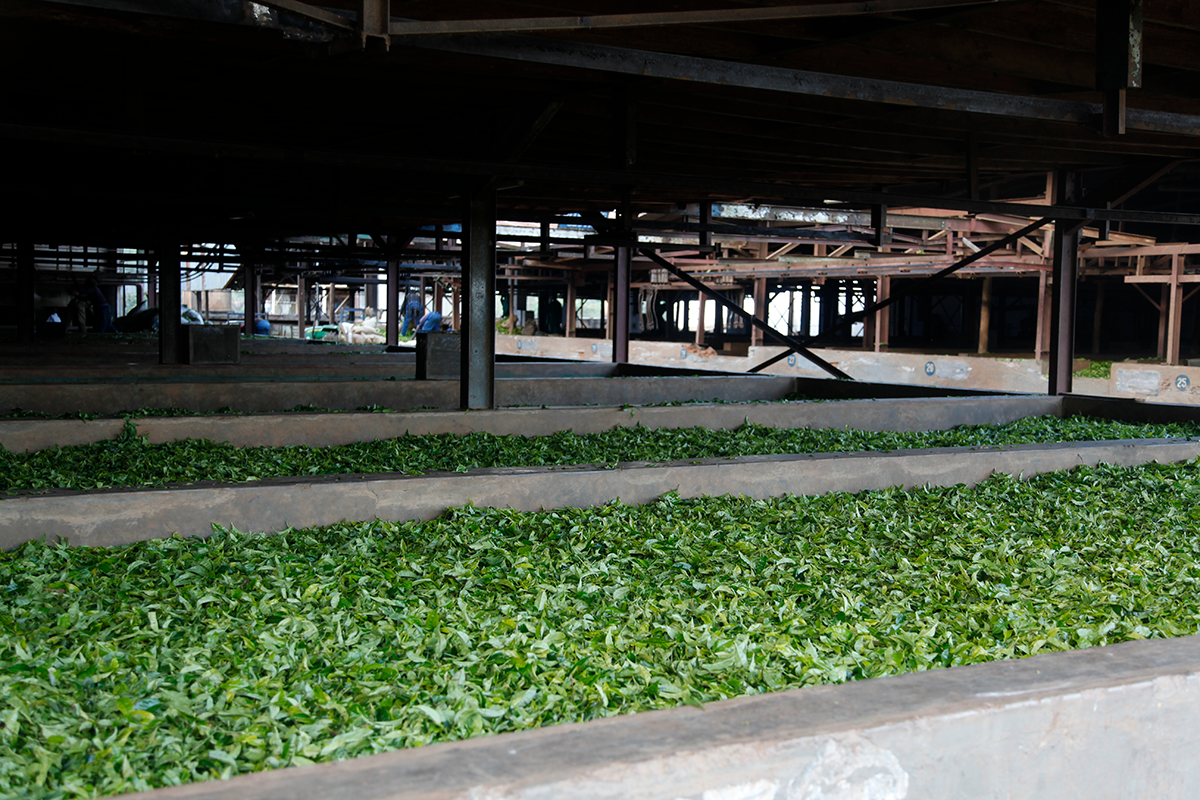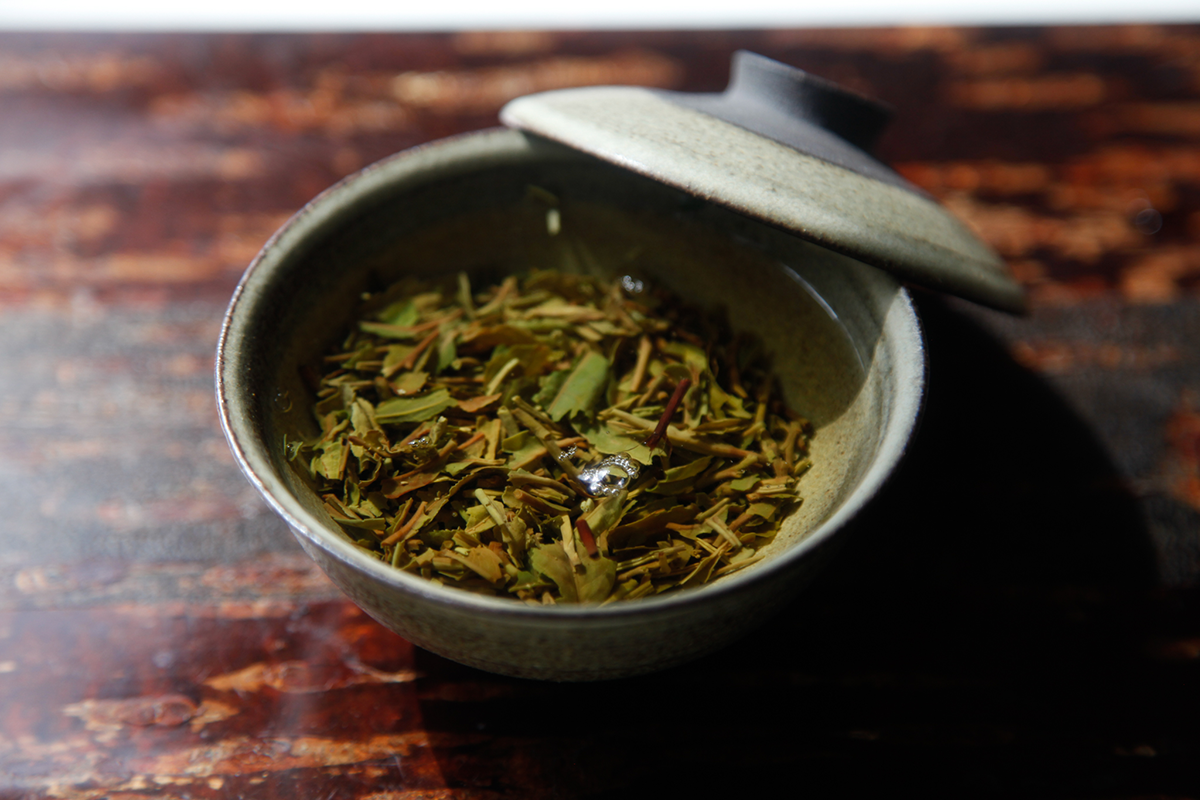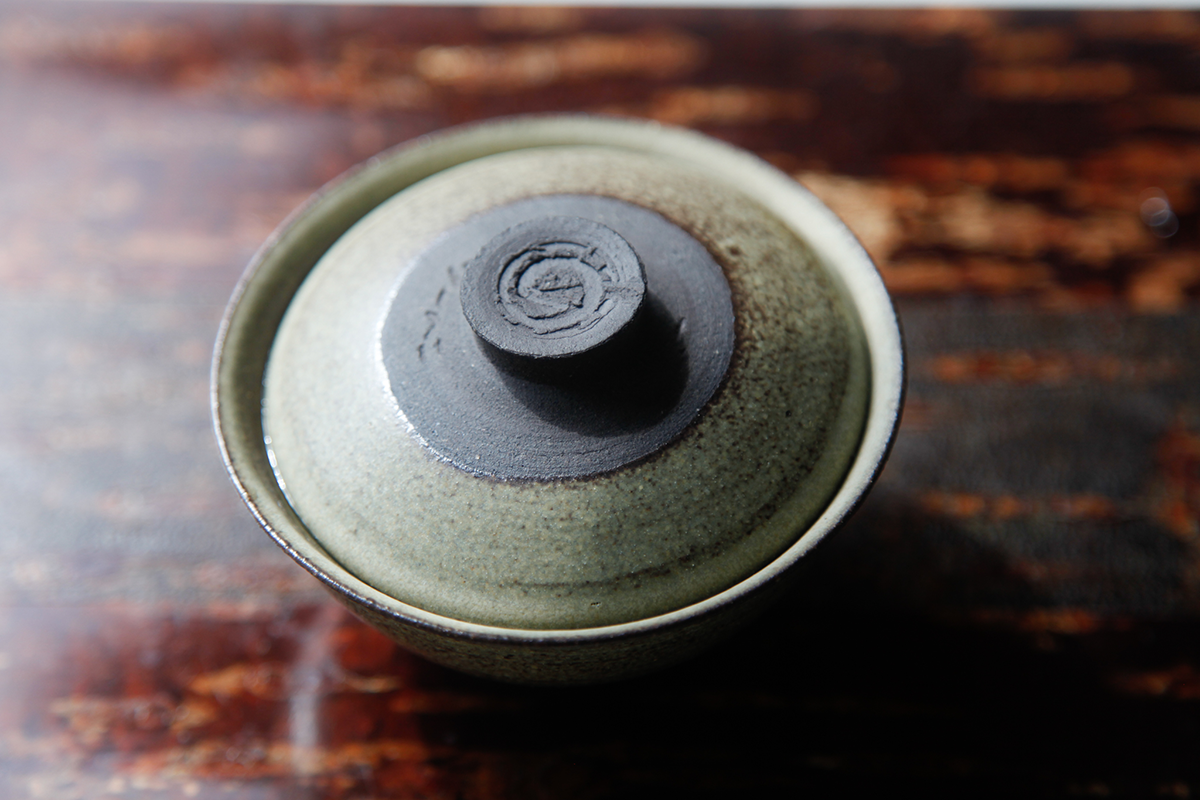In the Argelès-Gazost region of the Pyrenees mountains in south-west France, Lucas is something of a missionary. With a degree in agricultural engineering in his pocket, he returned to his family’s land to start growing tea. After spending time with producers in Laos, Indonesia, China and Nepal, this pioneer now oversees a new estate of several thousand plants. He watches over them all attentively, observing how the different cultivars grow, and is already producing delicious teas which he brews in a Chinese gaiwan, allowing the leaves to reveal their full potential. Humble yet strong-willed and confident, Lucas wants to create a model of sustainable European tea cultivation that will set an example in agroecology. Here, he explains this to Sidonie, who is with me to record our podcast: Un Thé, Un Voyage.
ARCHIVE FOR May 2023
Worthy withering
Withering is essential for the production of many teas. During this stage, the camellia leaf, which starts out being 80% water, gradually loses its moisture. French people often ask what the word fletrissage, for withering, means, as it is rarely used in our language. However, it appears in the most famous monologue in Corneille’s play, Le Cid, albeit in a different context, as Corneille is referring to withering laurel leaves. Moreover, far from adding value to the wreath on Don Diègue’s head, their withering signifies the loss of a proud appearance, a kind of dishonour.
But tea is not theatre. We have never heard anyone lament the withering of tea leaves and declaim: “O rage! O despair!”
Live free!
The gaiwan works as follows: after placing a large quantity of leaves in it, equivalent to around a third of its volume, the water is poured in. The first – short – infusion is poured into a “fairness cup” or directly into the drinking cups, and is followed by a second and then a third infusion.
The leaves are completely free during this series of brief infusions. Watch them unfurl. They are at home in water. Have you ever looked at tea leaves as they infuse? Have you ever seen them so relaxed? The gaiwan is not just a vessel for brewing tea, it’s a spectacle in itself. The object is beautiful, and the leaves inside are beautiful as they infuse. When we gently lift the lid, we can admire their colour, their shape, the way the water brings them back to life. And, of course, we can appreciate the aromas that emanate from them, which we can smell by lifting the inside of the lid to our nose.
The simplicity of the gaiwan
Apart from the tasting set, which is sometimes used by professionals, there are different ways of brewing tea. In China there is the zhong or gaiwan; in Japan the shiboridashi or kyusu. In the West, the most commonly used vessel is the teapot. But why not explore lesser known objects? Today, I would like to talk to you about the gaiwan. It’s a very simple thing, consisting of a kind of bowl with a lid. Let’s take a look at it from the outside while the tea is brewing inside. The beauty of the gaiwan lies in its radical simplicity. What is the principle of brewing tea? It involves bringing the tea leaves into contact with water. As the leaves unfurl, they release their aromas and other elements. I can’t think of a better place to brew tea leaves than in this remarkable object. I could show you the inside of the gaiwan right now, but I’d rather wait. What I enjoy most while my tea is brewing is appreciating the vessel in which it’s brewing: its colour, the way the changing light plays on its surface, its material. I observe the roughness of the clay and my contemplation transports me to distant landscapes. This gaiwan was made in the Périgord region of France by a talented ceramist, Manon Clouzeau. Let’s have another look at our tea brewing under this delicate lid, which is so easy to hold. I’ll leave you to look at it and will see you soon. Next week, I’ll take the lid off.



